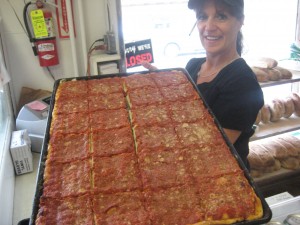I got an email last week from Citicard inviting me to switch to paperless statements and be entered for a chance at a $500 gift card. Well, I already switched to paperless but I’ll click the link and enter anyway. The link asks me to log in to my account and I do, and I’m told I am already signed up for paperless. No mention of the sweepstakes. D’oh! Now I am an angry camper.
There are several things that could have done better in the above example. First, clean your list so you don’t email people you don’t want to get the offer. Second, don’t piss off loyal customers… if they’re going to send me the invite, how hard would it have been to build a landing page that says “you’re already paperless, congratulations, we’ll enter you in the sweeps anyway”? Third, don’t break the law… which is what Citi may be doing with “consideration” in which some groups are ineligible for a sweeps drawing.
Sweepstakes are a great way to push people over the edge and make them respond to your marketing. They’re also very affordable because you can control the number of prizes. Instead of sending a $10 Amazon gift certificate to everybody who fills out a reg form (and paying for the fulfillment as well as the cost of the gift), it may be far cheaper to have just one $1000 certificate and everybody who fills out that form is eligible.
A good sweeps prize will have some relationship to the audience and the marketing message. I do a lot of lead generation promos to tech audiences and the chance to win the latest gizmo (the iPad right now, iPod touch last year, Palm Vx back in the day…) is like catnip. A bad sweeps prize is one your management comes up with that is goofy and takes lots of words to describe and distracts from your core selling message (an all expenses paid trip to your corporate meeting, even if it’s in Hawaii, is a good example).
The most basic legal rule is to avoid “consideration”…. you cannot have some requirement that people must go through a certain process to enter, or certain people are ineligible. The way to avoid it is to have in fine print in your sweepstakes rules that anybody can enter by sending in a 3×5 card. And you do need rules, and you need to put them in the right place, which is why you do need legal help if you’re going to do a sweeps properly.
Back in my magazine promo days there were several firms who offered a turnkey package of writing your sweeps rules, picking a winner and indemnifying you against fraud and legal problems for $10,000. I am sure the price is higher now but a service like this is still a bargain in terms of peace of mind. Even so, most of the small to midsize marketers seem to copy an existing set of rules, do their best to keep it honest, and keep their fingers crossed they haven’t done something illegal by mistake.
Finally, be prepared for the objection from your sales department that the leads are no good because they are sweepstakes-generated. In the one test I’ve been involved in where a client carefully monitored the process, they got way more leads with a sweepstakes but also a significant increase in qualified leads, as measured by their serious intent and qualifications as potential buyers.
It just makes sense that a sweeps is going to attract an incremental number of perfectly good prospects who were on the fence about registering, or simply too busy with too many advertising contacts, and this pushes them over. What’s needed is a prequalification process, through the questions on the registration form or a qualification precall from someone who is not an expensive salesperson or telemarketing firm, to see if they are really serious. If not, the respondent never enters the sales system but they still get to enter the sweepstakes. That’s the law.
